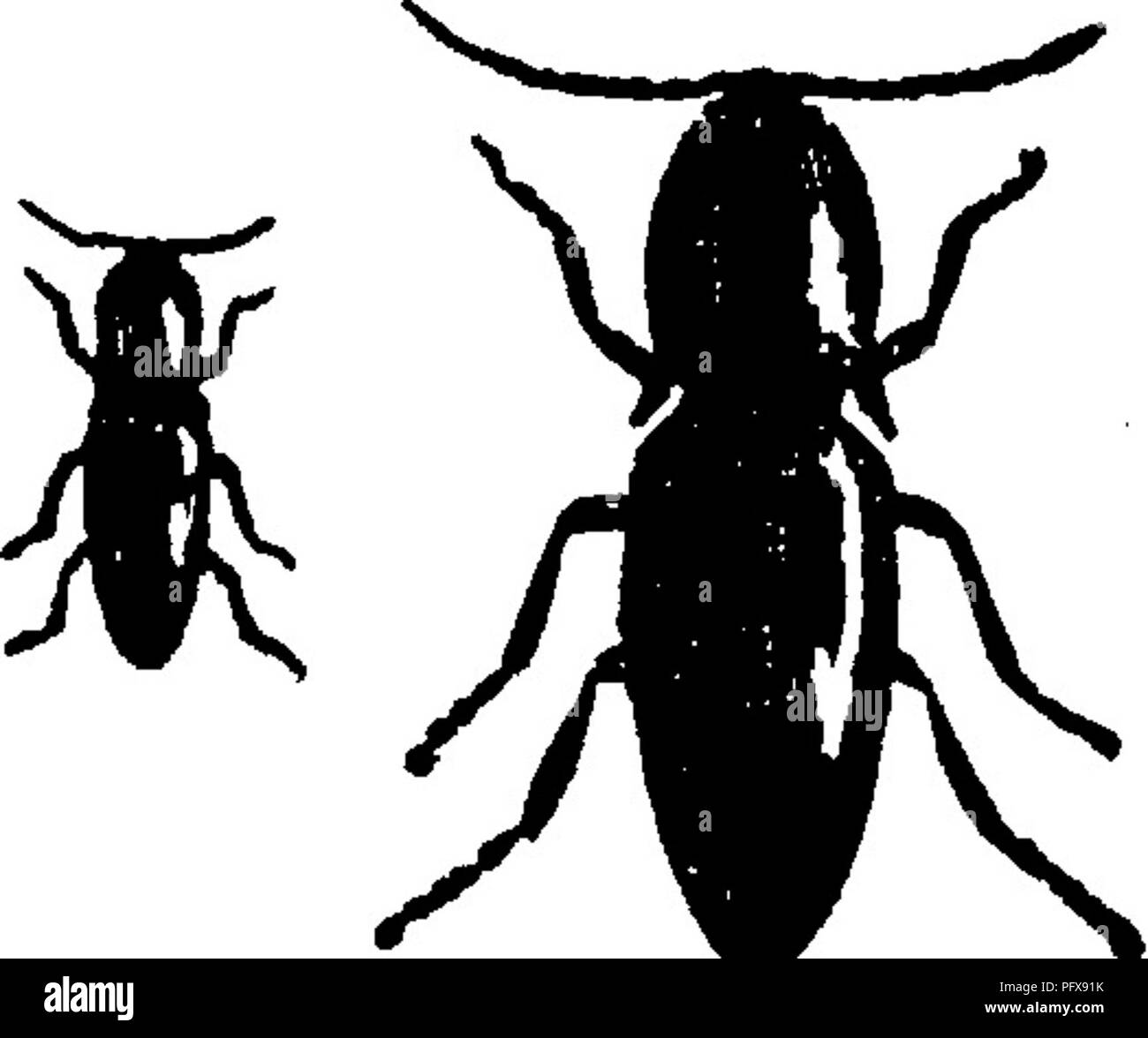. A manual for the study of insects. Insects. COLEOPTERA. 545 beetle jumped^ so high that it betrayed us and was Hber- ated, and we were disgraced. Our common species of cHck-beetles are mostly small or of medium size, ranging from one tenth to three fourths of an inch in length. A few species are larger, some reaching the length of nearly two inches. The majority of the species are of a uniform brownish color; some are black or grayish, and some are conspicuously spotted (Fig. 654). The body is elongated, somewhat flattened, and tapers more or less towards each end ; the antennae are moderate

Image details
Contributor:
Central Historic Books / Alamy Stock PhotoImage ID:
PFX91KFile size:
7.1 MB (126.1 KB Compressed download)Releases:
Model - no | Property - noDo I need a release?Dimensions:
1729 x 1445 px | 29.3 x 24.5 cm | 11.5 x 9.6 inches | 150dpiMore information:
This image is a public domain image, which means either that copyright has expired in the image or the copyright holder has waived their copyright. Alamy charges you a fee for access to the high resolution copy of the image.
This image could have imperfections as it’s either historical or reportage.
. A manual for the study of insects. Insects. COLEOPTERA. 545 beetle jumped^ so high that it betrayed us and was Hber- ated, and we were disgraced. Our common species of cHck-beetles are mostly small or of medium size, ranging from one tenth to three fourths of an inch in length. A few species are larger, some reaching the length of nearly two inches. The majority of the species are of a uniform brownish color; some are black or grayish, and some are conspicuously spotted (Fig. 654). The body is elongated, somewhat flattened, and tapers more or less towards each end ; the antennae are moderately elongated, and more or less p, c, 554. - a ciick- serrate ; the first and second abdominal seg- ^^riL%j, ^'^''nltura"i ments are not grown together on the ventral s^^^ and enlarged, side; and the hind coxae are each furnished with a groove for the reception of the femur. The larvae of click-beetles are long, narrow, worm-like creatures, very even in width, with a very hard covering, and are brownish or yellowish white in color (Figs. 655 and. Fig. 655. Fig. 656. 656). They are commonly known as wire-worms, a name suggested by the form and hardness of the body. Some wire-worms live under the bark of trees and in rotten wood ; but many of them live in the ground, and feed on seeds and the roots of grass and grain. In fact there is hardly a cultivated plant that they do not infest; and, working as they do beneath the surface of the ground, it is extremely difficult to destroy them. Not only do they infest a great variety of plants, but they are very apt to attack them at the most susceptible period of their growth, before they have attained sufficient size and strength to withstand the attack; and often seed is destroyed before it has germinated. Thus fields of corn or other grain are. Please note that these images are extracted from scanned page images that may have been digitally enhanced for readability - coloration and appearance of these illustrations may not perfectly